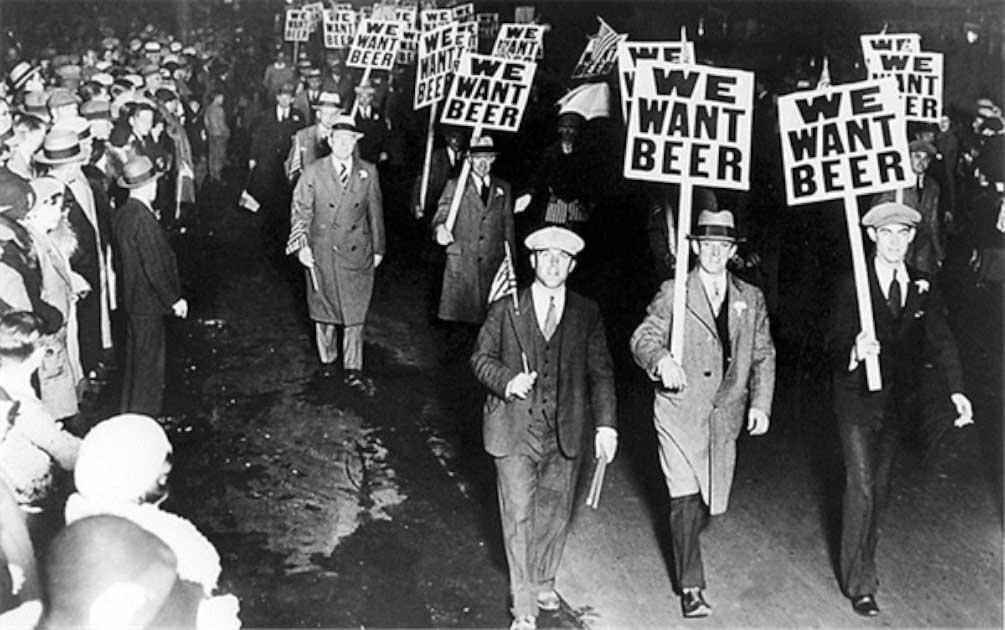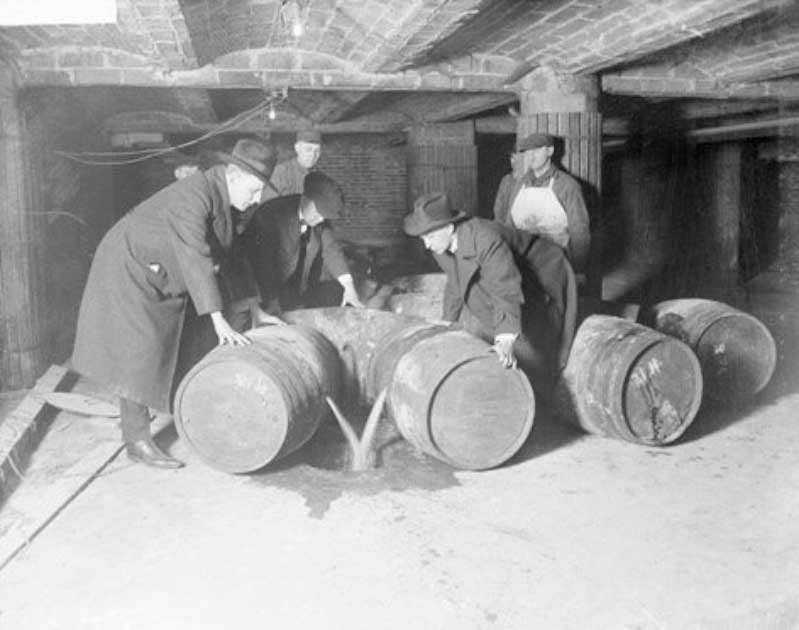Alcohol, on the whole, is not good for you. On the one hand as a social lubricant it can be a lot of fun, but the costs to the health of both individuals and society cannot be ignored. The example of Prohibition in the United States suggests how governments have tried to step in to curb the vice of alcoholism.
Such a move was drastic, and only of limited effectiveness. But it seems that under the surface there were far worse things at work under the guise of Prohibition than ever came from drinking alcohol. There is horrifying evidence that the US government may have used extreme measures, such as poisoning alcohol, to keep people away from drinking.
Did the US government poison the alcohol supplies to enforce Prohibition? And what happened to the people who drank from the poisoned cup?
Mass Reform or Mass Murder?
On the evening of Christmas Day in 1926, the Bellevue Hospital in New York City experienced a sudden and unexpected influx of patients. All of them complained of alcohol-induced poisoning. One after one, holiday partygoers landed up in the hospital with different symptoms such as blindness and hallucinations.
One of the patients believed in his delirium that Santa Claus was chasing him while holding a baseball bat. By the end of the day, over 60 people had been admitted to the hospital due to poisoned alcohol. Eight of them died.
The death count rose over the next two days to 23. But this was not some singular event: by the end of Prohibition in 1933, the poisoning of alcohol had claimed a staggering 10,000 people.

The deaths were due to a federally-orchestrated poisoning program, with many who survived permanently injured with such problems as permanent blindness or organ decay. The death toll paints a grim picture of Prohibition-era America.
Looking back at these numbers, you would wonder about one question in particular. Was Prohibition really necessary? If laws were in place to restrict the production, sale and transportation of liquor, why did the government have to poison alcohol supplies?
Origins of the Poisoning Program
The roots of the federal poisoning program started with the approval of the 18th Amendment in the US Constitution. According to the 18th Amendment, manufacturing, selling and transporting alcoholic beverages in the United States were deemed illegal.
Why did anyone think of banning alcohol in the US? Well, the drinking habits of American people had a significant role in fueling the call for Prohibition.
In the early days as an independent country, Americans abused alcohol, unlike any other country, even today. By 1810, America had around 14,000 distilleries, which struggled a lot to keep up with the demand.
Another striking fact points to the average consumption rate for American adults in 1830, which stood at almost seven gallons (26.5 liters) of pure alcohol annually. The number places every American adult with almost 90 bottles per year. With such humongous drinking rates, Prohibition seems like a reasonable solution, doesn’t it?
Many anti-alcohol organizations with deep puritan roots, such as the Anti-Saloon League or ASL and many high-minded crusaders, lobbied for pushing the 18th Amendment. Most of the propositions for banning alcohol reflected the deterioration of the moral fabric of American society.
Subsequently, the Volstead Act was passed in 1919, immediately after the ratification of the 18th Amendment. Subsequently, Prohibition came into play in January 1920.
However, Prohibition did not achieve desired outcomes as alcoholism rates grew further in the 1920s, at more than 300%. In addition, many speakeasies emerged in America, with almost 30,000 of them in New York City itself. It seemed that banning alcohol may have even made it more desirable.
Furthermore, Prohibition also paved the way for criminals and the mafia to build illegal bootlegging empires. Instances of smuggling, theft and production of illegal alcohol became rampant as many street gangs turned Prohibition to their benefit. In response to such defiance of the rules for Prohibition, the federal government decided to poison alcohol supplies. How did the government poison alcohol?
The Secrets of Poisoned Alcohol
To understand the poisonings, it is important to understand how the general population got their alcohol in the first place. Smugglers had to bring in premium whisky from outside the country, most of which was restricted to eligible customers.
- The Poison Squad Trials: Do You Know What’s In Your Food?
- Heroin Cough Medicine? The Rise and Fall of Patent Medicine
If you had money, Prohibition was all but a ruse for adding taxes to your drinking expenses. On the other hand, illegal alcohol manufacturers stole industrial alcohol supplies and renatured them to make them eligible for consumption.
If you take a look around your home, you will find alcohol in almost every other thing. Whether it is nail polish or a cleaning solvent, alcohol is present in different concentrations in many products. However, you cannot drink just about any liquid that has alcohol content, as it may include toxic substances.

Industrial alcohol is denatured by adding some impurities to make it unsuitable for consumption. Bootleggers smuggled or stole industrial alcohol and relied on chemists to make it drinkable. At this point of time during Prohibition, it was a full-fledged war between chemists.
But strangely, during prohibition the characteristic roles of governments and criminal was inverted. The government chemists worked on adding contaminants to alcohol to make it undrinkable, while the chemists of bootleggers worked on removing the contaminants.
Ultimately, the government chemists discovered an indelible impurity which can make alcohol poisonous. The poisonous ingredient was methanol, or methyl alcohol, which bonds closely with drinking alcohol and cannot be removed easily.
Many people in positions of authority warned against the consequences of the poisoning. The then Chief Medical Officer in New York City, Charles Norris, and chief toxicologist, Alexander Gettler, sent out strict warnings against such an act by the government. As a matter of fact, an indictment by Charles Norris titled “Our Essay in Extermination” verified the scandalous nature of the federal poisoning program.
The Consequences
The intent of the US government and anti-alcohol lobbies behind Prohibition and the subsequent federal poisoning program turned towards a darker path. More than 10,000 deaths due to poisoned alcohol not only make the US government morally liable for such an act but also calls their ulterior motives into question.
Was it all about making America a great country free of alcoholism or another failed attempt at creating a perfect society? Interestingly, the Prohibition-era deaths due to alcohol poisoning faded away into history after Prohibition ended in 1933. People could now procure alcohol legally, safe from being poisoned by their own government.
Top Image: The end of Prohibition in 1933. By this point the US Government had caused 10,000 deaths by deliberately poisoning alcohol supplies Source: New York Times / Public Domain.
By Bipin Dimri